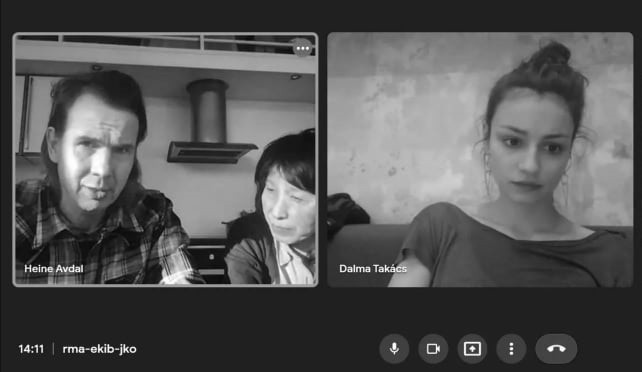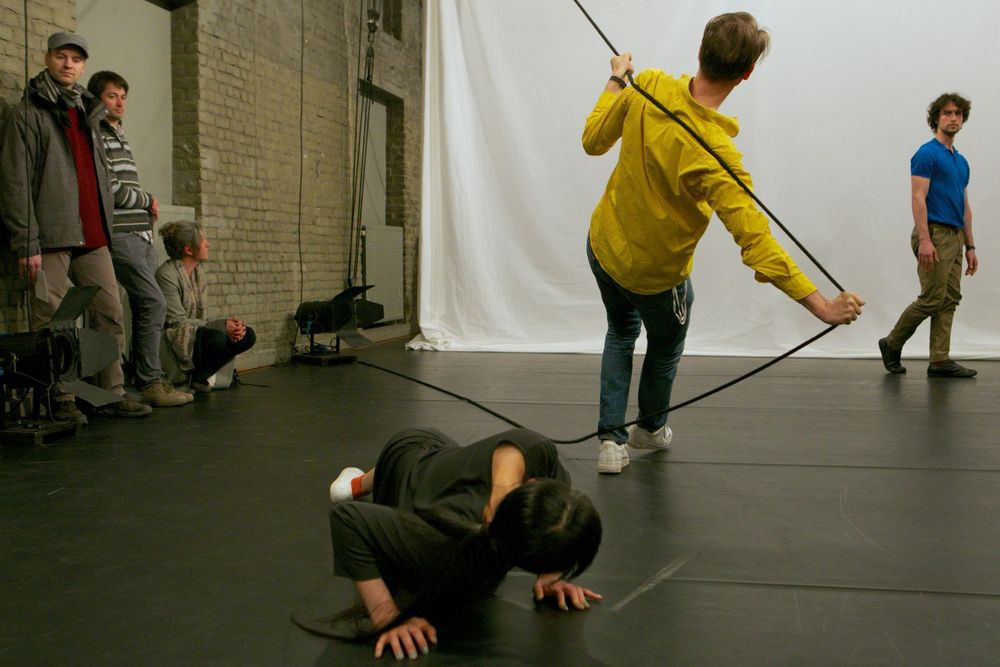
Interview with the founders of fieldworks collective
How does a general theater experience look like to you? According to our well-learnt codes, we are passive and non-moving receivers of the performance, with all eyes on the performers, who’s motions are supported by given acoustic and visual background. Now imagine, that this hierarchy is collapsed, and instead of the performer, your focus is directed on those so-called elements, that seemed to be subordinated before. Heine Avdal (NO) and Yukiko Shinozaki (JP) – the founding members of fieldworks – are in a constant research and experimentation in the meaning of performance art. In their newest piece, unannounced, they invite us to redefine our role as audience, and reinvent the meaning of presence.
The English-friendly artwork is performed at 24thand 25th March in Trafó House of Contemporary Art as part of the AV Composers series. It invites the audience for a unique journey to rediscover the magic of shared moments and collective presence.
This year you are celebrating the company’s 20th birthday. How does it feel to look back on the first shows?
Heine Avdal: It is an amazing journey. We’re coming from a dance educational background; we worked as dancers with other choreographers for years. Then 20 years ago we started to make our own productions, and I see it as a journey of exploring what choreography means to us and finding our artistic identity in this field. In the initial years we put the emphasis on the body and its movements. Then through the years we expanded our focus to other elements of choreography, including objects, sounds, lights, the presence of the audience.
We started to consider all these elements on a non-hierarchical level. In our vision, any element can be the main character of a performance. This is one of the most interesting questions in fieldworks’ art.
Most of the audience considers performers as the main element of a staged composition. How is it possible to reduce emphasis from the performer, and raise emphasis on other elements?
HA: It is always possible, and it is never possible. It is a process where you try and search for different alternatives, and you try to stabilize the one that works. But this is a fluid vision through the performance. The subject itself does not change, although we manipulate timing, shifts, and spaces. The way how we connect the different elements is half of the work itself. First, we figure out the idea of an artwork, secondly is how to connect ideas. Sometimes the latter is even more important than the former.
Yukiko Shinozaki: I would say it is all about where we direct the focus. For example, in unannounced we have a scene called Darkness, where you cannot see bodies, but you perceive the choreography of sounds, texts, letters and the language itself. And all our scenes shift the focus between these different elements, inviting different senses of the audience.
How do you prepare yourself for these plays?
HA: It is all about opening up our senses to the world around us. During planning, we became more conscious about what is happening in the world, and what is happening in our personal life. Then we make abstract translations about our perceptions. Imagine it as a poetry, without letters.
YS: In case of preparation, many imagine our work as dancers gathering in dance studios for rehearsals. But we work differently. We often just visit an exhibition or meet in cafés to exchange ideas about our cultural experiences, views of life. These different programs we do together help us to connect and get inspired.
HA: Sometimes research means to find out what the research is. This requires a special state of mind – to decide, that you are switching to a kind of awareness, you connect to yourself and your environment, which will be reflected in given movements or performances. This is different each time. You don’t have a recipe.
Previously you mentioned, that during the research you tried to be more aware of your environment. This is reflected in the conception, that every little detail has a special meaning in your performance. What is the matching point between dance, fine arts, the audience and the space? How do these all affect each other?
HA: The biggest part of our work is to figure out how things come together. We must find a very good balance between the elements. For instance, in unannounced the usage of the scenography and props was inspired by still life paintings. And we are also influenced by the people we collaborate with – e.g. our dramaturg, André Eiermann - who is keen on linguistics – documented the process by using words instead of a camera. However, originally it was not among our plans. It came just during the brainstorming. Preparation is a constant process of selecting and throwing ideas away.
YS: We also play with the sounds and spaces. We asked our sound designer to consider the space as an instrument itself, therefore the sounds are not coming from the typical speakers in the theatre space, but also from small objects and devices.
Regarding the audience, their role is shifting through the performance. Instead of sitting as passive receivers, they walk through different spaces in guided tours, and they decide about their own rhythm and distances. We invite them to engage, but nothing is forced.
So the performance is rather an experience, than a piece.
HA: We don’t look for the short way. We always look for the long way. Time and space are extended. The show does not start in Trafó – it starts when you hear about the performance for the first time. When you see the advertisement. When you leave your flat. You go on public transport, then enter the bar, then enter the different rooms of the theatre. In our everyday life, we learn given codes on how to move from one place to the other. But in our play, you must reconsider the meaning of spaces, moving movements and your own position, your own presence. You must figure out a new user manual, which redefines your existence.
How does this kind artistic attitude address the audience? What’s the message behind?
YS: We want them to reconsider those things that we are taking for granted in our everyday life. We should shed the light on those little details which we normally miss out. Every big happening is a collection of little details which are worth our attention. Our biggest task is to find out the best way to connect these so-called details which give us the whole picture.
HA: It is a symbol of how life happens unannounced. We plan everything in advance, but most of the time the outcome will be sudden, unannounced. This makes life both exciting and tragic.
Regarding the big picture – how does unannounced fit into the framework of fieldworks?
HA: To understand this, you must check out our other works. Every project is a result of a previous project. Unanswered questions stay with us, therefore they pop up in the making of new performances.
This will be your third time performing at Trafó.
What do you expect from the experience?
YS: From last time, I remember a very warm and engaging audience. I just hope to have the same experience and have good discussions with the people. To have a good talk with curious people is always a good experience.
More info: https://trafo.hu/en/programs/performansz_unannounced
Facebook RSVP: unannounced Facebook event
fieldworks website



















